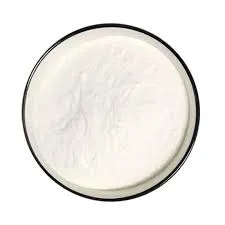
ડીસેમ્બર . 27, 2024 19:06 Back to list
china hpmc-hydroxypropyl methyl cellulose
Hydroxypropyl Methyl Cellulose (HPMC) A Versatile Polymer with Diverse Applications
Hydroxypropyl Methyl Cellulose (HPMC) is a non-ionic, water-soluble polymer derived from cellulose, a natural polymer found in the cell walls of plants. This substance has garnered significant attention across various industries due to its unique properties, including its ability to form gels, emulsify, and stabilize mixtures, making it an invaluable ingredient in many formulations.
Chemical Structure and Properties
HPMC is produced through the chemical modification of cellulose, where hydroxyl groups on the cellulose chain are replaced with hydroxypropyl and methyl groups. This modification enhances the solubility of cellulose in water and increases its thermal stability. HPMC comes in various grades, differing mainly in the degree of hydroxypropyl and methyl substitution, which influences its viscosity and solubility characteristics. This versatility allows for tailored applications in sectors ranging from pharmaceuticals to construction.
Applications in the Pharmaceutical Industry
One of the most significant uses of HPMC lies within the pharmaceutical sector. It serves as an excipient in the formulation of tablets, capsules, and other dosage forms. HPMC is valued for its ability to control drug release rates, offering sustained-release formulations that improve therapeutic efficacy and patient compliance. By manipulating the viscosity and gel-forming properties of HPMC, formulators can create tablets that dissolve at predetermined rates, ensuring a steady release of the active pharmaceutical ingredient (API) into the bloodstream.
Moreover, HPMC is widely utilized in the production of ophthalmic solutions and contact lens formulations. Its excellent film-forming abilities and high moisture retention make it a preferred choice for eye drops, enhancing the comfort and efficacy of these products by providing prolonged hydration.
Role in Food and Culinary Applications
china hpmc-hydroxypropyl methyl cellulose

In the food industry, HPMC plays a crucial role as a food additive. It is classified as a thickening agent, stabilizer, and emulsifier, contributing to textures and consistency in various products. From sauces and dressings to ice creams and baked goods, HPMC helps maintain product integrity during storage and enhances mouthfeel. Its ability to retain moisture also aids in extending shelf life by preventing drying and oxidation.
Additionally, HPMC is increasingly popular in the realm of gluten-free and low-calorie food products. As a substitute for gluten, it lends elasticity and structure to doughs, allowing for the creation of palatable gluten-free baked goods. Its low caloric content and versatile functionality make it an attractive ingredient for health-conscious consumers.
Construction Industry Applications
Beyond food and pharmaceuticals, HPMC finds extensive use in the construction industry, particularly in cement-based materials. HPMC is added to mortars, adhesives, and plasters to improve workability, water retention, and adhesion properties. In tile adhesives, for instance, HPMC enhances the application of the adhesive on surfaces, allowing for easier spreadability while maintaining sufficient moisture to ensure effective bonding during curing.
The inclusion of HPMC in construction materials contributes to reduced cracking and improved performance in both interior and exterior applications. Furthermore, it helps regulate the consistency of building materials, ensuring optimal results in various climatic conditions.
Conclusion The Future of HPMC
The applications of Hydroxypropyl Methyl Cellulose are vast and continually expanding as industries increasingly recognize its benefits. As advancements in technology and formulations arise, the versatility of HPMC ensures its continued relevance. Its inherent properties make it an essential ingredient in pharmaceuticals, food products, and construction materials, contributing to innovations that improve performance and sustainability.
In a world increasingly focused on health and sustainability, HPMC stands out as a valuable polymer that bridges traditional needs with modern demands. As research continues to unveil new potential applications, HPMC is likely to play a pivotal role in the development of future products, further solidifying its place in diverse industries. Its ability to meet various functional requirements while remaining safe and effective ensures that Hydroxypropyl Methyl Cellulose will remain a staple in both current and future formulations across numerous sectors.
-
Versatile Hpmc Uses in Different Industries
NewsJun.19,2025
-
Redispersible Powder's Role in Enhancing Durability of Construction Products
NewsJun.19,2025
-
Hydroxyethyl Cellulose Applications Driving Green Industrial Processes
NewsJun.19,2025
-
Exploring Different Redispersible Polymer Powder
NewsJun.19,2025
-
Choosing the Right Mortar Bonding Agent
NewsJun.19,2025
-
Applications and Significance of China Hpmc in Modern Industries
NewsJun.19,2025







